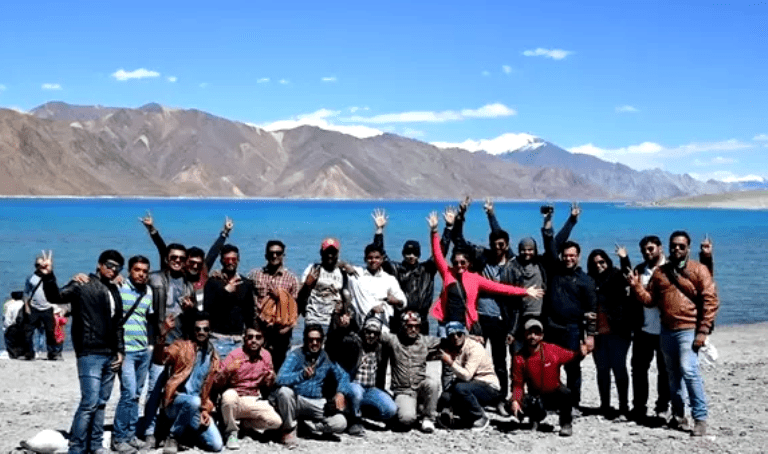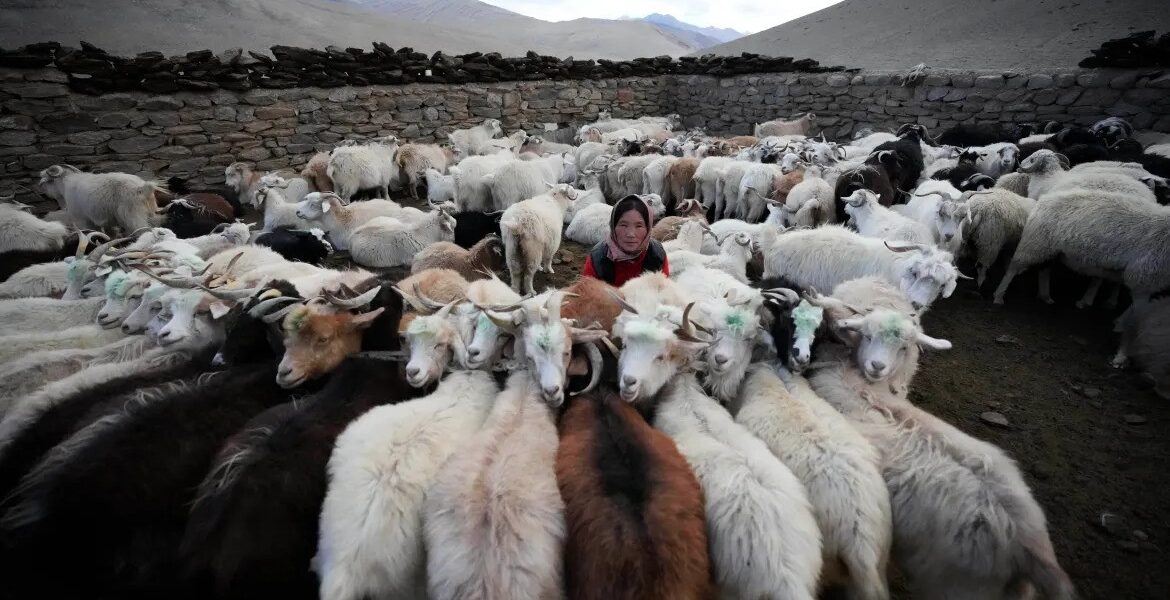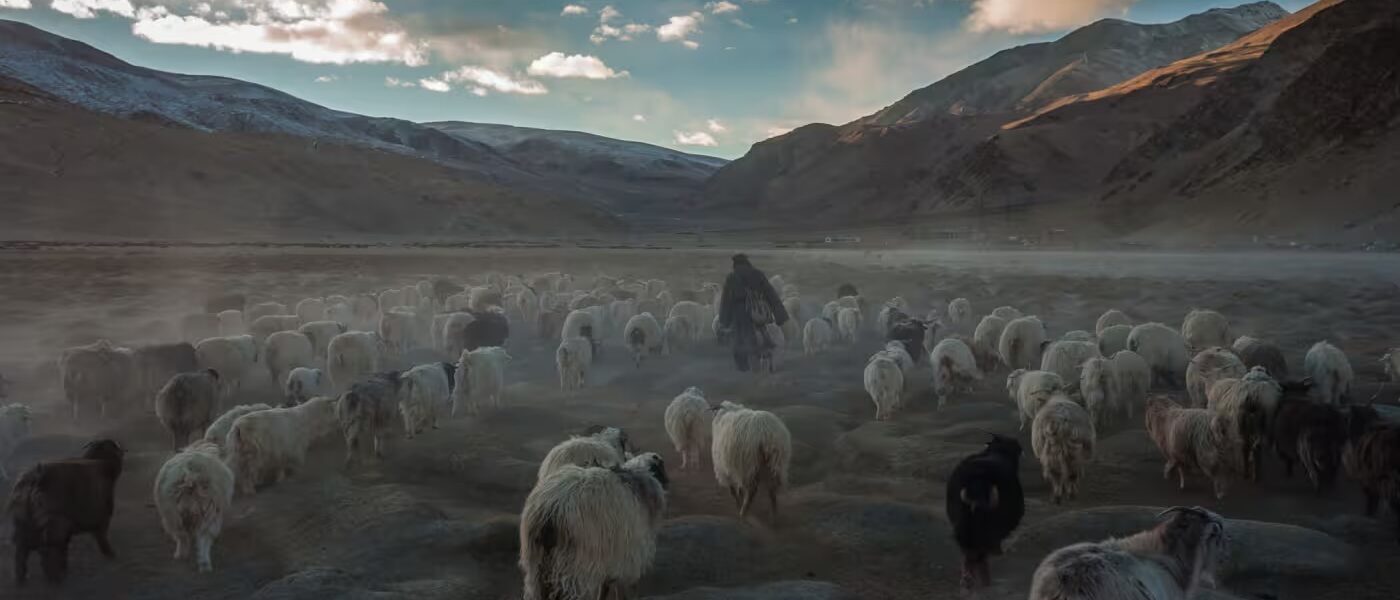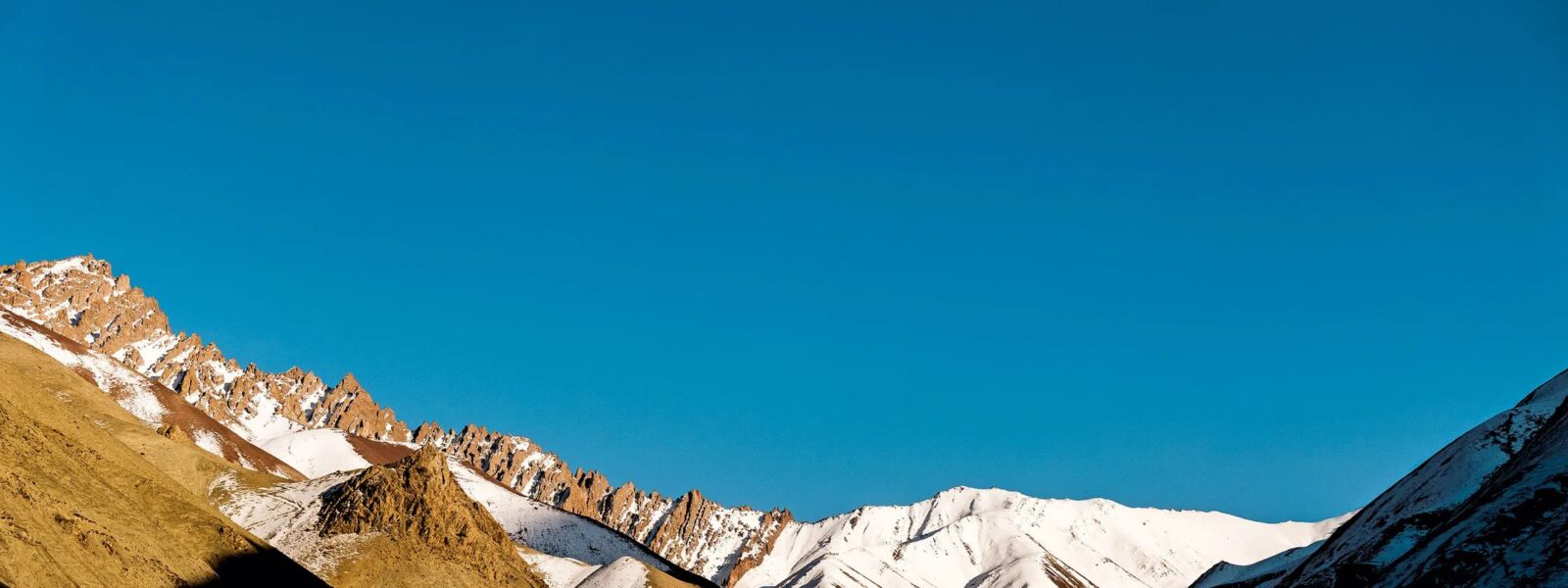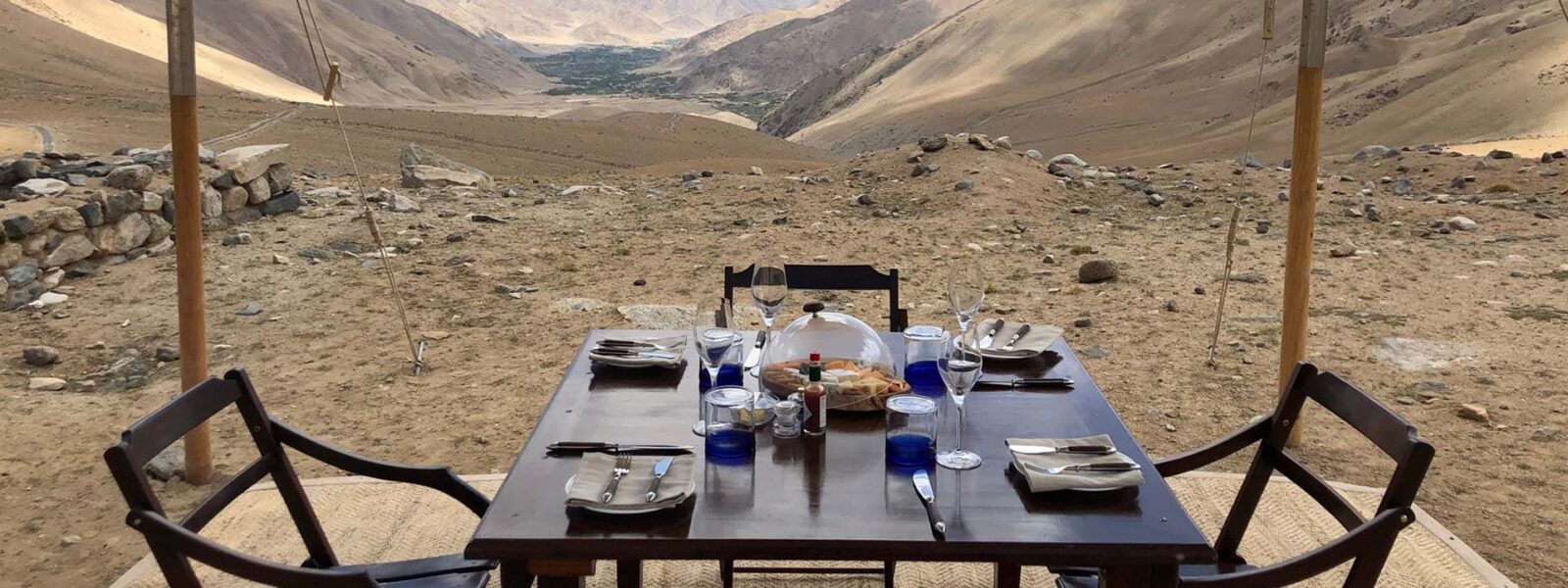Why Ladakh Is the Ideal Destination for Group Travel
A Landscape That Demands Shared Awe
There are places that humble the soul before they humble the body. Ladakh is one of them. Perched high in the Indian Himalayas, this wind-chiseled region evokes a sense of awe that demands to be witnessed in the company of others. The vastness is staggering — mountain ranges like frozen waves, sunlit ridges folding into shadow, and skies so blue they seem painted on. This is not a place for isolation; it is a landscape that begs to be shared.
The silence here is not empty — it’s immense. In such an overwhelming environment, traveling as a group creates a buffer against that immensity. It’s the kind of silence that’s easier to carry when echoed by another breath beside you. Whether you’re watching the last pink light fade from the Nubra dunes or standing shoulder-to-shoulder atop Khardung La, the world feels somehow more reachable when experienced together.
In my years of consulting for regenerative tourism across Peru, Bhutan, and Chile, I’ve seen how certain terrains provoke reflection — but Ladakh fosters something more: a sense of *shared reverence*. Unlike the solitary vastness of the Atacama Desert or the sacred isolation of Bhutanese hermitages, Ladakh invites connection amid its isolation. Here, to travel in a group isn’t merely practical — it’s elemental.
Bonding Through Isolation
In Ladakh, the distances aren’t measured in kilometers alone — they’re measured in elevation gain, breathlessness, and the thinning of conversation as the altitude rises. And yet, in that physical stretch, something remarkable happens among travelers: bonding through shared hardship, and laughter through dust.
Group travel in Ladakh offers more than logistical ease; it creates a miniature ecosystem of mutual reliance. One carries the extra water bottle, another shares altitude sickness tablets, someone hums a tune that lifts the whole mood at 4,800 meters. As temperatures drop, emotional warmth emerges — people check in, share food, offer scarves and stories.
In a 2023 study published by the Global Nature-Based Travel Journal, over 76% of respondents reported stronger post-travel emotional bonds from high-altitude group experiences compared to beach or city tourism. These are not mere holidays — they are rites of passage.
The emotional alchemy that unfolds here — against snow-clad passes and crumbling prayer stones — is subtle, but unforgettable. You leave not only with sun-darkened cheeks and photos of golden stupas, but with a handful of people who saw you at your quietest, your most windburned, and your most alive.
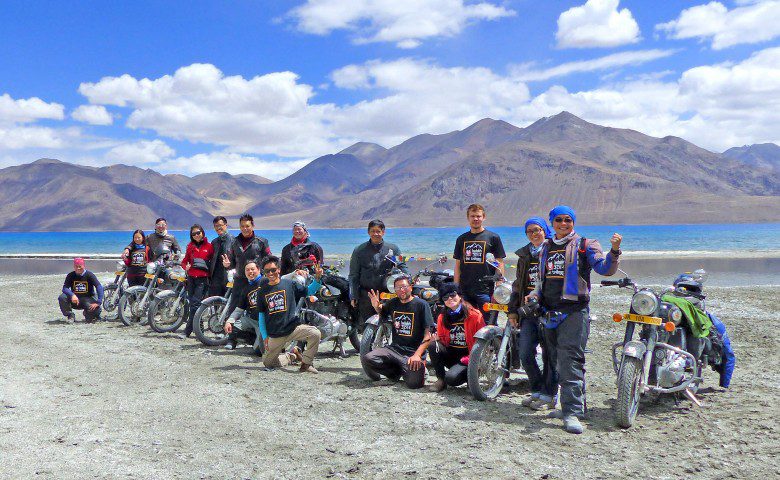
The Cultural Magic of Traveling as a Group in Ladakh
Monasteries That Breathe with Time
There is a stillness in Ladakh’s monasteries that you do not interrupt — you step into it, carefully, like a guest invited into someone’s dream. I remember the first time our group entered Hemis Monastery at dawn. The air was thin and scented with juniper smoke. Monks chanted low, unhurried syllables. None of us spoke. We didn’t need to. The silence was already full.
Traveling solo, it’s easy to miss the subtle interplay between watcher and watched. In a group, one notices what another misses. Someone points to a mandala half-faded on the wall; someone else explains the rhythm of the hand cymbals. These shared insights deepen the experience, layer it with memory.
Ladakh’s gompas — Thiksey, Diskit, Alchi — are not just destinations. They are emotional waypoints. Each holds centuries of devotion, painted walls that whisper, and prayer wheels spun with the touch of thousands of fingers. Seeing these places in the company of others magnifies their gravity. A collective reverence forms. For many of us, that was the first time we understood what it means to enter a living heritage, not just observe it.
Festivals, Traditions, and Collective Wonder
A group trip to Ladakh during festival season is not just travel — it’s immersion. I arrived during the Hemis Tsechu, a vibrant celebration of music, masks, and myth. We stood together in the monastery courtyard, hemmed in by locals in embroidered wool and children with bright eyes. Drums echoed against the mountain cliffs, and dancers in elaborate brocade transformed time into ceremony.
Unlike large tourist spectacles in other parts of Asia, Ladakhi festivals retain a raw, intimate texture. When experienced in a group, they become moments of synchrony. Your laughter rises with the group’s; your breath catches at the same dance sequence. The shared gaze becomes an amplifier of wonder.
Traveling as a group also opens doors into smaller traditions — morning butter tea with a host family in Nubra, watching barley threshing in a village near Basgo, participating in simple chants at a roadside stupa. These are not staged moments; they are real, and they matter more because someone else was beside you to whisper, “Did you see that?”
In Europe, we often think of culture as history — museums, ruins, stories already told. But Ladakh’s culture is still unfolding. It’s in motion. And as a group, we don’t just watch it — we step into its current, together.

Designing the Perfect Group Itinerary Through Ladakh
Leh – The Starting Point of All Great Conversations
Every group journey in Ladakh begins, naturally, in Leh — a town suspended between memory and altitude. With its whitewashed stupas, narrow alleys, and rooftop cafes draped in prayer flags, Leh is more than a stopover for acclimatization. It’s where the tone of your trip is set, where strangers become companions over steaming thukpa and the first cup of butter tea.
For European travelers used to the refined stillness of Alpine villages or the ordered charm of Scandinavian towns, Leh’s rhythm feels delightfully unpredictable. Here, old men in gonchas trade greetings in the market next to schoolchildren with smartphones. Group travelers quickly find themselves swept into spontaneous moments — a Ladakhi wedding procession, a street artist sketching the Zanskar range, a monk handing out barley grains at dawn.
Several cafes in Leh are designed with travelers in mind — both those seeking solitude and those leaning into new friendships. I’ve found that a well-designed itinerary doesn’t rush through Leh. It lingers long enough to let conversations happen, to adjust bodies to the altitude, and to set an emotional pace that will echo throughout the journey.
The Classic Route: Nubra, Pangong, and Beyond
From Leh, group tours often trace a familiar but breathtaking loop: north to Nubra Valley via the mighty Khardung La, then eastward to Pangong Lake, before circling back. These are well-worn roads, but nothing about the experience feels ordinary. In a group, even silence becomes shared — a communal hush as Pangong’s still water mirrors the early morning sky, a collective gasp as the road drops into the sand dunes of Hunder.
The benefit of a group tour here lies in rhythm and resource. One traveler spots the perfect curve of the Shyok River; another notices wild yaks grazing by a mani wall. And when things go wrong — a flat tire in Tangtse, a sudden snow squall en route to Chang La — it’s the camaraderie that turns problems into stories.
This itinerary — Leh to Nubra, to Pangong, and back — remains a cornerstone of any meaningful Ladakh group travel experience. Its accessibility, range of terrain, and accommodation options make it ideal for both first-timers and seasoned travelers, particularly from Europe where contrasting landscapes often lie hours — not days — apart.
Offbeat Experiences That Groups Remember
Yet beyond the classic circuit, Ladakh hides routes that feel intimate, even secret. On one trip, our group diverted to Turtuk, a village of apricot orchards and Balti heritage near the Pakistan border. The simplicity of the village — children playing with kites, stone homes warmed by laughter — offered an entirely different rhythm. We stayed in a family-run homestay, shared stories over firewood chapatis, and walked without itinerary.
Groups thrive in these lesser-known places. Whether it’s watching stars from a campsite near Tso Moriri or listening to oral histories from elders in Hemya, the offbeat becomes unforgettable precisely because it was unexpected — and witnessed together.
These moments, rich in humanity and humility, are what elevate a Ladakh group itinerary from a plan to a pilgrimage. As a travel consultant, I often tell my clients: design for wonder, but leave space for serendipity.
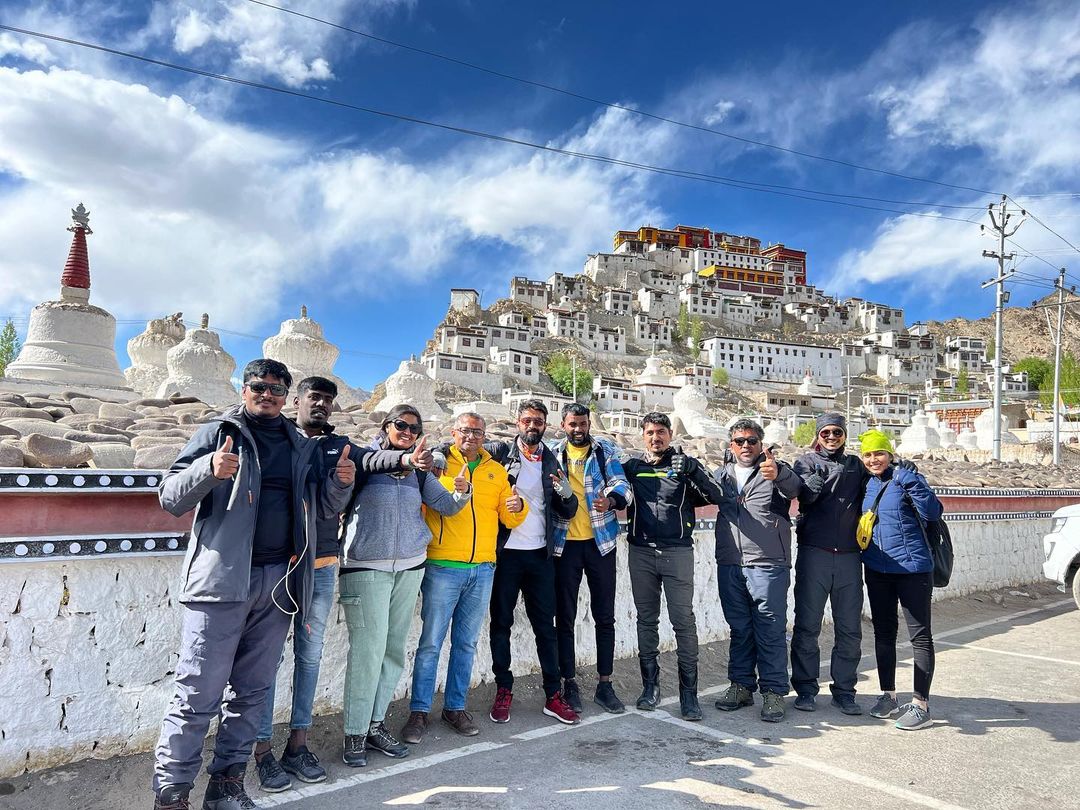
Logistics for Group Travel in Ladakh
Permits, Vehicles, and Sustainability
To journey well in Ladakh is to journey mindfully — and in no area is this more important than logistics. While the mountains may dominate the imagination, the road to them is paved with permits, vehicles, and ethical choices. For group tours, handling these foundations efficiently is what allows the magic to unfold.
Most regions beyond Leh — such as Nubra Valley, Pangong Tso, and Tso Moriri — require Inner Line Permits. These can be arranged through registered local operators, and for group travel, it’s wise to coordinate permits collectively to save time and avoid administrative confusion. For European travelers unfamiliar with such restrictions, this step may seem bureaucratic, but in reality, it’s a necessary thread in the region’s political tapestry.
Transport, too, plays a pivotal role. For groups of 6 to 12 people, tempo travellers (local minibuses) offer both comfort and panoramic views through wide windows — essential for soaking in the grandeur. Smaller groups may prefer SUVs with Ladakhi drivers who know not only the terrain but the myths it carries. A good driver in Ladakh is half guide, half storyteller.
And then, there’s sustainability. I always advocate for group tours that prioritize low-impact lodging, refillable water systems, and locally sourced meals. In a high-altitude desert where resources are finite, every choice matters. Choosing a regenerative itinerary not only protects Ladakh’s fragile ecosystems but also supports community resilience.
Best Times and Practical Tips for Group Cohesion
The best time for group travel in Ladakh is between late May and mid-September, when roads are open and high passes are (mostly) snow-free. July and August are the liveliest — filled with festivals and warm days — but also the most crowded. For groups seeking more solitude, early June and mid-September offer a gentler pace and golden light that bathes the mountains in honeyed tones.
Acclimatization is critical. I advise all group members to spend at least two nights in Leh before ascending. Altitude affects people differently, and group leaders should plan for slower hikes, frequent hydration breaks, and plenty of flexibility. In this environment, compassion is as essential as a down jacket.
Packing for Ladakh is an art: layers are key, with temperatures swinging from 25°C in the sun to sub-zero at night. A shared packing list helps align expectations and reduce redundancy — one group doesn’t need six camping stoves. Coordinate, collaborate, and simplify.
Finally, emotional logistics: designate a group facilitator, create moments for reflection, and build in pauses — not just for sightseeing, but for listening. The rhythm of the Himalayas is slow, ancient. Let your group fall into step with it.
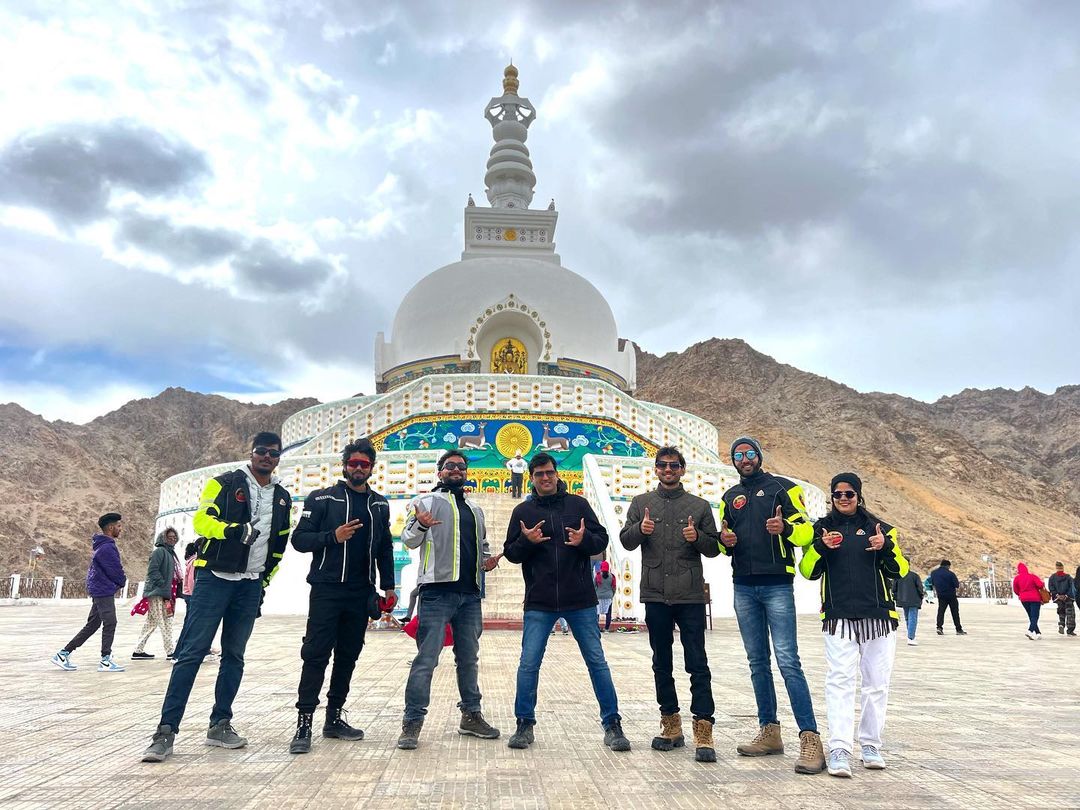
The Emotional Impact of Shared Journeys in Ladakh
Why We Remember Group Travel More Deeply
Some landscapes are etched into memory not by their physical features, but by the company with whom we behold them. Ladakh is one such place. It’s not just the soaring ridgelines or the silent gompas that linger — it’s the shared silence, the exchanged glances, the collective breath held as snow flurries drift across a high pass.
Group travel creates what psychologists call “co-experienced memory anchors” — moments made more vivid because they are witnessed and validated by others. In a 2022 European travel behavior study, nearly 68% of respondents recalled group-based travel experiences as more emotionally impactful and longer-lasting than solo ones. Ladakh, with its intense terrain and thin air, seems to amplify these effects.
I remember one morning vividly. Our group had just crested the ridge overlooking Pangong Lake. The sun was rising, casting long pink shadows across the icy stillness. No one spoke. Someone reached out and gently took another’s hand. We stood that way — quiet, connected — and I knew, years later, we’d all still remember that moment not as individuals, but as a collective memory suspended in altitude.
These aren’t the polished experiences you find on brochures. They are raw, unfiltered — and that’s their power. Whether it’s helping a group member adjust their oxygen flow or sharing dried apricots under a prayer flag, these micro-acts build bonds far stronger than itineraries can predict.
From Strangers to Family — One Trek at a Time
There’s a quiet transformation that unfolds on Ladakhi trails. In the first days, your group may still resemble a patchwork of personalities: the slow walker, the chatterbox, the one always hunting for a perfect photo. But by day four, something changes. People begin to walk at each other’s pace. Water bottles are passed without words. Packs are carried without complaint.
The Himalayas break people open gently. Stripped of mobile signal, comfort zones, and curated appearances, travelers begin to show up more fully. Laughter rings louder. Vulnerabilities surface without shame. A misplaced sandal becomes a legend. A night spent under leaking tents becomes a badge of honor. In this space, strangers become more than companions — they become your trail family.
And perhaps that’s the most unforgettable thing about a group tour in Ladakh. You arrive with an itinerary. But you leave with people — people who have seen you winded at 5,000 meters, weeping at the beauty of a monastery at sunset, laughing until your stomach hurts on a rickety drive back to Leh.
Long after you’ve washed the dust from your boots, long after the altitude fades from your lungs, the faces of your group — their kindness, their presence, their shared wonder — will remain. Etched into memory, like prayer stones on the pass.
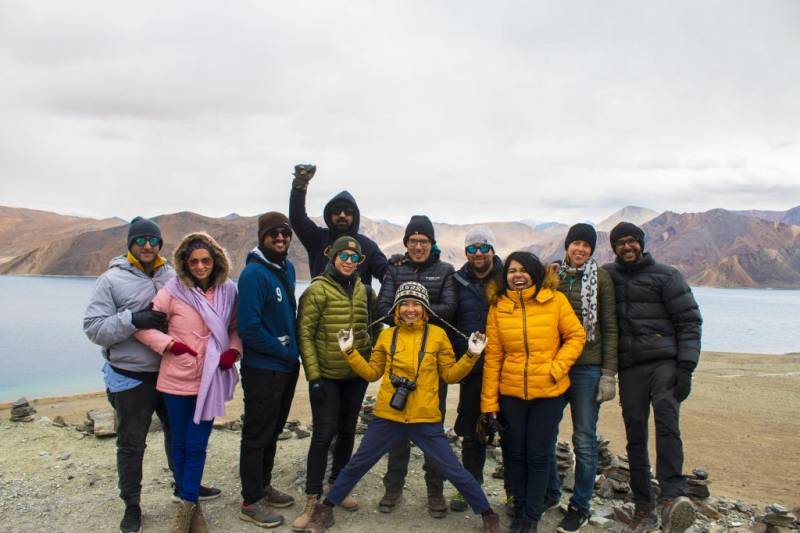
Final Thoughts: Ladakh as a Canvas for Connection
Ladakh doesn’t ask for your attention — it simply commands it. Through the wind over mountain passes, the saffron robes fluttering in monastery courtyards, the slow, deliberate gait of a caravan pony, everything in this Himalayan plateau speaks to a different tempo of life — one that invites us not just to see, but to connect.
For European travelers — so often surrounded by the efficiencies of modern infrastructure, the curated landscapes of national parks, the scheduled elegance of Alpine trails — Ladakh offers a welcome rupture. It’s not polished, nor predictable. But that’s precisely what makes it unforgettable. Here, the unpredictable dust storm, the sudden hospitality of a stranger, or the taste of homemade apricot jam can become the moment that lingers long after you’ve returned home.
And in a group, these moments are amplified. They are echoed in shared laughter across dinner tables in homestays, in the collective hush at 5,300 meters above sea level, in the eyes that meet yours when the landscape becomes too beautiful to describe. Connection here is not a luxury — it is the natural language of Ladakh.
I’ve spent my career walking the edges of remote tourism — from the Sacred Valley in Peru to the fjords of Norway — but Ladakh stirred something I hadn’t felt in years: the clarity of community in motion. Not a forced togetherness, but a shared unfolding. Every bend in the road offered a new chance to know one another, and ourselves, just a little more deeply.
So if you find yourself wondering whether group travel in Ladakh is worth it — let me offer this: yes, for the landscapes. Yes, for the monasteries. Yes, for the clear desert light. But most of all, yes for the people you’ll walk beside. They will surprise you. They may even change you.
Because Ladakh is not just a destination. It’s a mirror — one that reflects back not only the majesty of the Himalayas, but the quiet, enduring magic of connection.
And sometimes, that’s the journey we’ve really been longing to take.

About the Author
Isla Van Doren is a regenerative tourism consultant from Utrecht, Netherlands, currently living just outside Cusco, Peru. At 35, she brings over a decade of experience designing sustainable travel models across Latin America, the Himalayas, and Northern Europe.
Known for her thoughtful balance between data and emotion, Isla writes with a voice that blends academic insight and personal reflection. Her work bridges the analytical and the poetic — using statistics to highlight patterns and sensory language to make them unforgettable.
This was her first journey through Ladakh — a land she approaches with the curiosity of a newcomer and the comparative lens of someone who has walked the fjords of Norway, the highlands of Peru, and the sacred valleys of Bhutan. Her writing draws readers into the landscape while quietly asking deeper questions about belonging, place, and what it means to travel together.
When she’s not consulting or writing, Isla can be found sipping coca tea on her porch in the Andes, hiking with her rescue dog, or researching cross-cultural models of ecological tourism.

